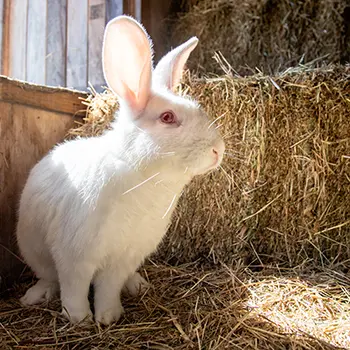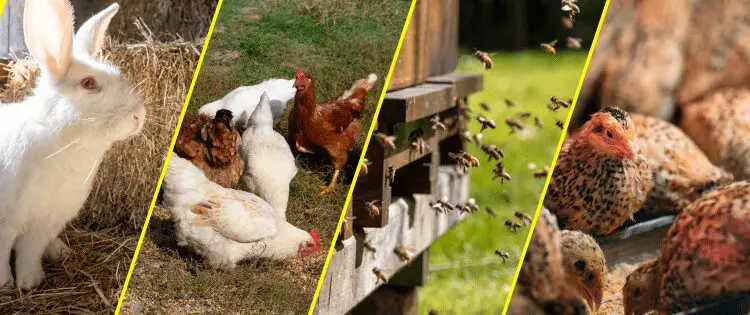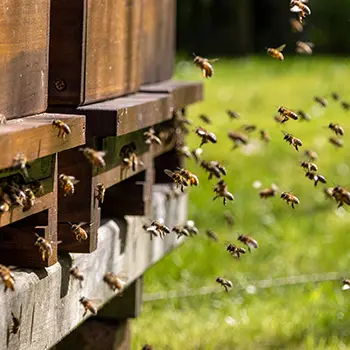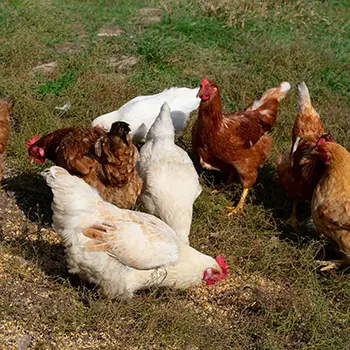While many of us dream of a ranch with sprawling acreage and thousands of head of cattle or another high-production type of livestock, it isn’t always yet in the cards for us. And it may take some time to get there. Or, perhaps, you’ve just started your farming journey with a new homestead and want to get your feet wet with low-maintenance animals for your homestead.
Whatever the reason for stopping by, we’re glad to have you. Let’s take a look at five critters that will get things done for you and yours.
Rabbits
Rabbits reproduce quickly and their manure can be spread directly on gardens to encourage fertility. While socialized young rabbits can be sold as pets, that isn’t their primary focus upon a homestead. People have been eating rabbits, including domesticated ones, for thousands of years. The meat has swung up and down in popularity, but it contains the largest concentration of certain types of Vitamin B per ounce that is commonly available in domestic meat production. You’ll also get hides that allow you to make very cozy slippers, gloves, and so much else.
If you’re concerned about processing your own, many processing shops are very comfortable with doing this for you. Rabbit is also a really wonderful place to start processing your own meat if you decide to do so. Rabbits require very little maintenance outside of feeding, watering, and making sure the animal’s enclosure is safe and tidy.
Quail
Quail are much the same as rabbits, with the only drawback being a lack of fur. Still, many people enjoy using their feathers for craft projects. Quail molt, that is to say shed their feathers, twice a year. This puts them off laying quail eggs, which go for a higher price than chicken eggs in most markets, but only briefly.
Again, quail grows quickly and produces meat and eggs for the family, as well as feathers for the crafty inclined. If getting the ever-popular Coturnix quail, these birds begin laying at 6 weeks old and will continue to do so regularly until 18 to 24 months of age, when they are ready for permanent retirement (in whatever way you desire). Once fully grown, quail only needs water and food for comfort. Many will also enjoy a dust bath. Most hens lay every day, with some laying twice a day.
Bees
Bees are an often overlooked necessity to the homestead, which is really too bad. Pollinators are in short supply and though the work is a little more labor intensive, bees really do look after themselves for the most part.
The biggest things you’ll have to look out for are problems within the hive, such as honey-bound hives (in which the bees overproduce honey and there is no more room) and disease. We won’t cover disease here, since many are very regional, but diseased hives must be cured or culled. And sometimes that isn’t a very pleasant thing to do.
Of course, bees make tons of honey. Right? In truth, a worker bee (who only lives for a month) makes only a small amount of honey in her entire lifetime. Yet, these wonderful insects offer so many pros for the new homestead that one would have to be crazy to discount them.
Chickens
We all know that chickens provide meat and eggs, but much like quail, fancy roosters can also provide feathers for those who love to work with feathers.
There are hundreds of chicken breeds available, some with stylish feathers, some with plain ones. Every single one of them lays an egg that is worth something to someone, even if that someone is you, and that something is your morning breakfast.
My neighbor’s first chickens were mixed breeds (barnyard mix) that they picked up at the local auction. Not only did these birds produce wonderful meat and colorful eggs, but they were incredibly friendly, too. My advice with chickens? Get whatever beautiful birds you want. If you decide to buy adults, look for bright combs and wattles; these birds are still laying. Paler combs and wattles are not.
Chickens, like the rest of these animals, need very little care. Roosters with long spurs (the talons on the back of the feet) may need them trimmed every now and again. Chickens rarely get sick and, in almost all cases, when they do it is almost always terminal if they actually require care.
Hair Sheep
Sheep are the only hoof stock to make this list because they are better about fences, in most cases than goats. Though we believe that there are many good goat friends out there, our experience says that they need electricity across the top and bottom of their fences to make sure that they don’t wander into a mess of their own making (or out onto a busy highway).
Hair sheep, specifically, shed out their coat in the spring and regrow it in the winter. Though these are almost entirely meat sheep (there are a few milking lines out there, but they are very hard to find), the lambs often sell well. Katahdins, Dorpers, Blackbelly, and so forth are just a few of the breeds available that completely drop their coat with no need to shear.
The big drawback with sheep is that you will need to deworm them and trim their hooves, at a minimum. This adds some care, but it isn’t very much. You may be able to hire a farrier to trim their hooves and a veterinarian to deworm and vaccinate them, but this will be an additional cost.
On the other hand, lamb meat usually sells very well in most areas. It is considered a delicacy above beef and, after one taste, you’ll probably be hooked.
Long-time homesteaders and farmers reading this, what animals would you suggest for this list? Are there some that you had when you started out that we didn’t include? We’d love to have your input in the comments down below.
You may also like:
An Insanely Effective Way to Build a 5 Year Food Stockpile (Video)
Livestock In Winter: Mistakes Even The Most Advanced Homesteaders Make














Thank you